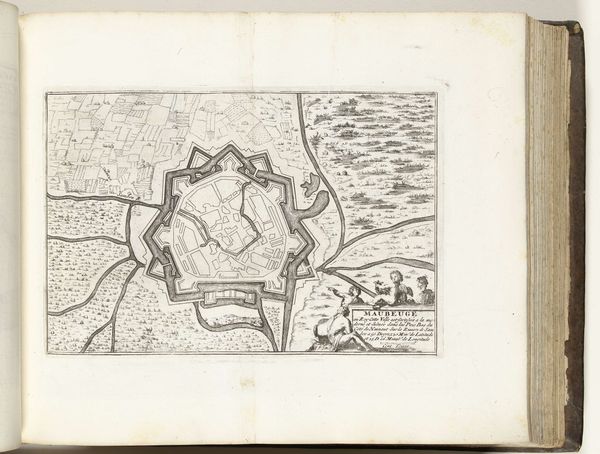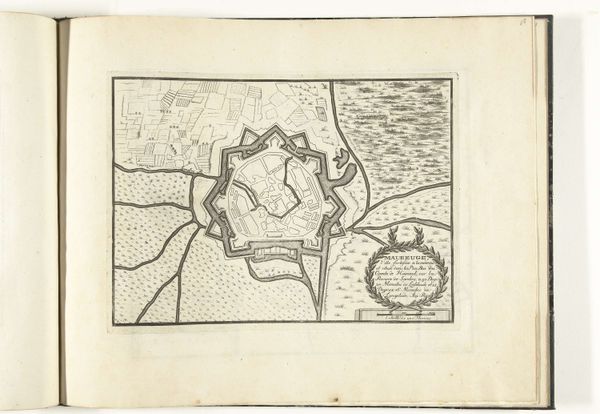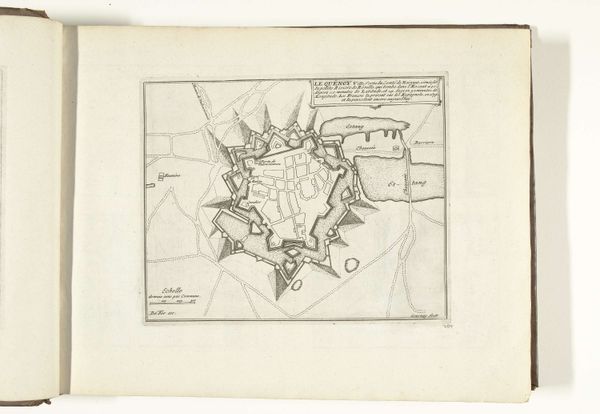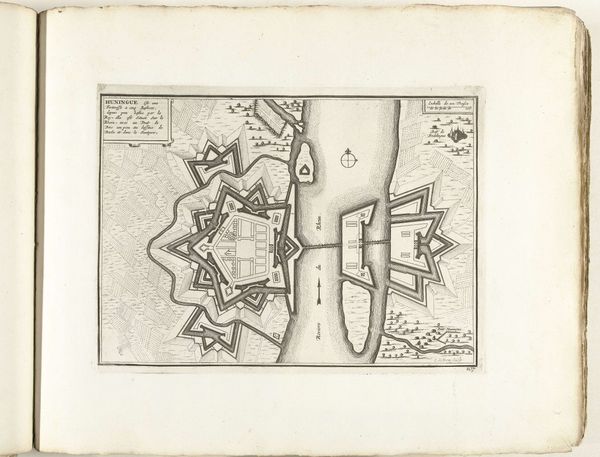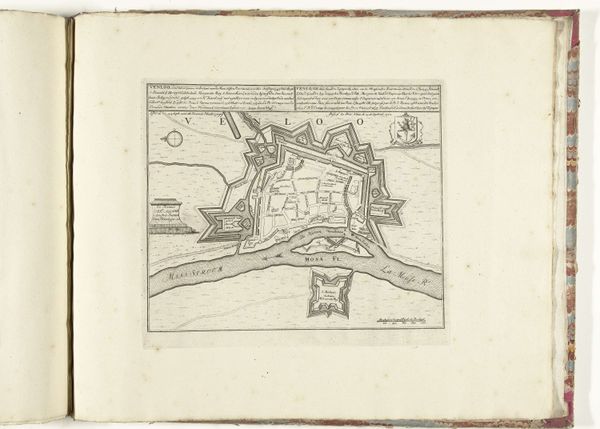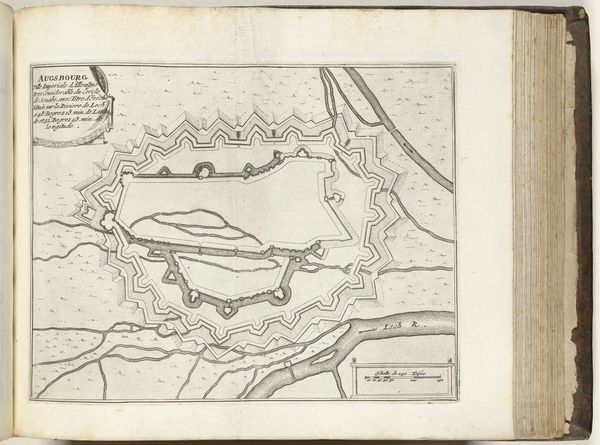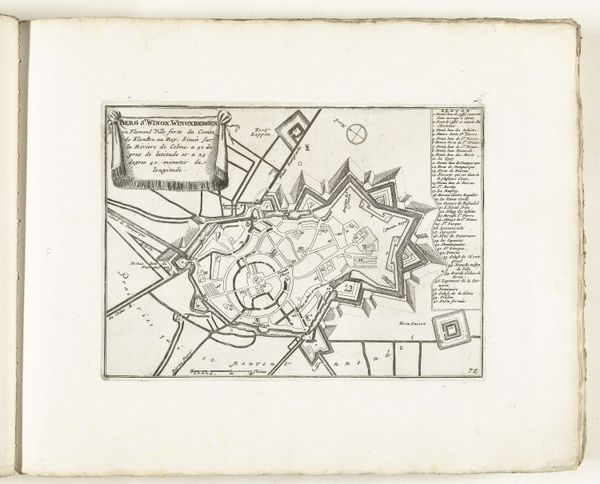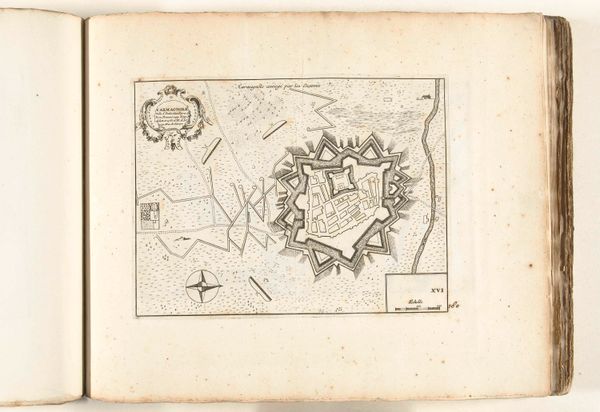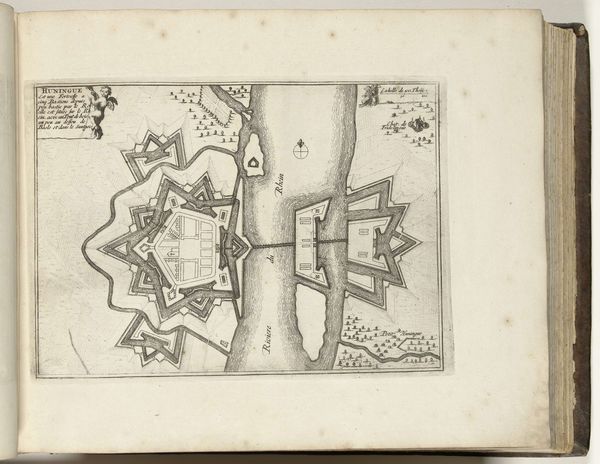
drawing, print, paper, ink, engraving
#
drawing
#
dutch-golden-age
# print
#
paper
#
ink
#
geometric
#
cityscape
#
engraving
Dimensions: height 206 mm, width 274 mm
Copyright: Rijks Museum: Open Domain
Curator: Here we have a fascinating print from the late 17th century, sometime between 1693 and 1696, depicting a plan of Sas-van-Gent. The authorship is listed as anonymous and is held in the Rijksmuseum. Editor: My first impression is one of impressive, almost obsessive, detail. It feels like every line has been considered and rendered with exacting precision using ink on paper. Curator: It's an engraving. Look at the cross-hatching and the clarity of the lines. These types of prints served a very important function at the time, documenting city infrastructure from a defense point of view as well as mapping expansion and resources. This one gives a bird’s eye view of a specific political and cultural time in this region. Editor: Exactly. The medium really speaks to its purpose. An engraving allows for reproducibility, disseminating this information widely. It's a functional object and also artwork, illustrating how knowledge about resources was distributed and who controlled those technologies and information at the time. The uniformity and reproducibility speaks of militarization, of standardization of resources... Curator: And this particular "star fort" design, with its angular bastions, tells us so much about military engineering and how warfare shaped urban planning at the time. These aren’t organic city streets that grew spontaneously; these are fortifications imposing their structure upon the people! Editor: It even resembles fabric, maybe heavy canvas that covers the ground – what sort of labor, human effort was put to making these city constructions... who are the workers making it real and living in there? Curator: True, these elements also underline a tension between civic pride, a projection of power, and also the potential reality of sieges and warfare during this time period. One can almost hear the echoes of conflict. Editor: For me it's all about understanding how the work was manufactured and what it reflects of production conditions; the engraver’s labor, materials used, distribution method and also the urban infrastructure captured with specific functionality. This print makes that evident, in spite of the missing signatures and records, the touch is evident. Curator: A truly intriguing document when you consider its purpose in early urban planning! Editor: Agreed, it reminds us how everyday resources speak volumes if you carefully observe.
Comments
No comments
Be the first to comment and join the conversation on the ultimate creative platform.


